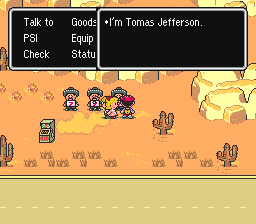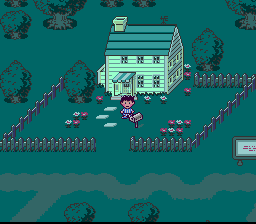Earthbound, A Look Inside Upcoming100 Greatest Console Video Games Book, Now on Kickstarter
A Deeply Important Period of Game History Explored by Brett Weiss and a Multitude of Games Experts
While much of our work about games and geek culture results in content hosted here on the Forever Classic Game website or The Forever Classic Podcast feed, we do publish elsewhere both online and in print. One of our colleagues, Brett Weiss, has been writing about games since 1997 and often reaches out to various gaming creators, videographers, developers, and more for additional insight for his books. I’ve contributed to both volumes of the “SNES Omnibus” in the past but a new book on game history is coming soon via Kickstarter, featuring an essay from not only myself but our Producer Joe Siemsen which we were given permission to share as a first look of what to expect in the book.
Through this Kickstarter, backers can snag themselves a hardcover printed copy of “100 Greatest Console Video Games: 1988–1998” and even save some money by bundling in previous releases such as the “SNES Omnibus” or the “NES Omnibus” series. Backers could also get a signed copy for something a little more special. The Kickstarter will end on June 23rd 2022 so be sure to take a look before then.
Cover of “100 Greatest Console Video Games: 1988–1998”
Many of Weiss’ books can be found in retail shops and bookstores. Learn more about Weiss’ work on his official website. We’ve also interviewed Weiss in the past on our podcast.
Writing about games is something that I have always appreciated and supported so it is amazing to see the spot of my bookshelf expand with everything from coffee table reference books to memoirs from important figures in the games industry to novels that expand the fantastical worlds and stories of games. I hope this trend continues, especially since games are just as worthy of an artistic medium as literature, music, and film.
Here is the Earthbound essay as it will be published in the upcoming book, written by Joseph Siemsen:
What happens when you take a group of kids and thrust them into a sci-fi driven modern day coming of age story that explores existentialism? A JRPG that not only manages to stand out among some of the best of the genre and of the time, but among video games in general. EarthBound is a fascinating product from director Shigesato Itoi, and there’s really nothing else quite like it (beyond other Itoi projects). So much about this game stands out and creates a timeless experience that has influenced the industry ever since, despite a few mechanics that haven’t aged quite as well as the game itself.
Numerous attributes contribute to EarthBound’s deserved status as a cult classic. The America-inspired modern setting and simple childlike perspective. The art direction that contrasts heavily against plot themes of death, growing older, and existence itself. A wacky sense of humor and strange, trippy visuals.
As with many players, my first exposure to EarthBound was well after the game’s original release. I discovered it with the smash hit Super Smash Bros., where Ness, the main character of EarthBound, is a playable fighter. All I knew at the time was that he seemed like a typical kid with a bat, a yoyo, and some psychic powers. For a long time, that was essentially it. My not having a Super Nintendo and the general rarity of the cartridge made access to the game difficult. I recognize now that I probably could have just emulated it, but it never happened. In fact, it wasn’t until 2013 that my love of EarthBound was firmly established.
In 2013, EarthBound saw release on the Wii U’s virtual console with far more fanfare than games on the service typically received. The original Player’s Guide was distributed with it as well, optimized for the Wii U’s Gamepad. At this point in my gaming life, I enjoyed experiencing major titles I missed out on during the ’90s, and my interest was piqued. I downloaded the game on day one and played EarthBound for the first time. I found it exceptional and unlike anything else I had ever played. A few years later, I played it on the Super NES Classic Edition mini-console, thoroughly enjoying every moment.
EarthBound is a turn-based game that follows the journey of Ness, who after experiencing a strange extraterrestrial encounter that turns various creatures, objects, and humans malicious, encounters a time-travelling bee from the future. Said bee recruits Ness on a quest to save the world. Starting in the town of Onett, Eagleland, Ness ventures to other cities like Twoson, Threed, and Fourside. Along the way, Ness meets allies; some are there to offer a little assistance while a few notable others actually join Ness’s cause.
Gameplay is fairly simple and familiar to anyone who has played a JRPG. It is separated into two major parts: exploration and combat. During exploration, you’ll discover new locations, reveal more of the story’s events, talk to non-playable characters, and shop at stores. Combat consists of taking turns to select an attack, ability, or item to defeat any of the numerous strange things that attempt to kill you, including crows, cars, and mushrooms.
One of the game’s distinct features is that when you receive damage, the health counts or rolls downward from the point the attack happens and isn’t finalized until it's done. Some quick thinking can prevent a character from dying if they manage to initiate a healing of some sort before reaching zero. In addition, after you reach certain levels, enemies run away from you, and if you do run into one, victory is assumed, and combat isn’t initiated—it simply grants victory and rewards. This is something I’d love to see implemented in more modern games, as it made revisiting earlier areas far more bearable. One aspect of EarthBound that hasn’t aged particularly well is the item management. It’s clunky and limited, requiring constant management and trading items between characters and sending items to your sister for storage.
EarthBound is a fascinating and unique piece of localization—a Japanese game making references to U.S. culture and settings. Then taking those references and presenting them in a way that connects with Japanese people. Then translated into English in a way that those same references can be enjoyed by the original culture in the same way. The challenges must have been immense. To translate American references back to Americans likely produced some of the most interesting choices in localization history and adds yet another layer on an already strange, yet charming game.
Unfortunately, this also resulted in censorship between the Japanese and English versions due to Nintendo’s concern about potential backlash from Americans. This includes removal of all references to child abuse or death, some possible misinterpretations of references to the KKK, and a potential copyright issue with The American Red Cross Organization. Despite this, Itoi’s original themes and moods still come through strongly as he carefully has the darker tones permeate nearly every aspect of EarthBound’s story. Cults, zombies, corporate greed, kidnapping, and the general sense that adults kinda suck are too ingrained in the plot to completely alter or remove them.
Itoi said as much years later, as quoted in Clyde Mandelin’s 2016 book, Legends of Localization Book 2: EarthBound: “I don’t really know how the English translation actually turned out, but I do know some skilled people handled it. I could tell they had keen senses, so I was able to leave it all to them without a worry in the world.”
A memorable piece of EarthBound’s history and experience is the Earthbound Player’s Guide that was included with the game and its eye-catching big box to accommodate the book’s inclusion. This player’s guide is a walkthrough, art showcase, and behind-the-scenes look all in one and was modeled after traditional real-world travel guides. It uses images, character art, and screenshots to showcase events, people, and points of interest in each major locale of the game. It also features extra story insights in the form of newspaper clippings from each city following Ness’s adventure.
I experienced my playthrough with access to this book as the Wii U version came with a digital version you could pull up on the Wii U Gamepad. Unfortunately, I couldn’t enjoy the scratch-and-sniff cards to their fullest since I don’t have the physical book, but it was still a lot of fun to use. It is a joyfully distinct and creative approach to game guides that I have yet to see replicated.
EarthBound is an amazing game no matter how you play it. From the meteor crash to the Runaway 5 concert. The battles against bosses like Frank, Frankystein, the Mondo Mole, and Master Belch. Seeing the sites and getting your picture taken. (“FUZZY PICKLES!”) Using the eraser to make pencil statues disappear, and the “eraser eraser” to erase erasers. WHACK!ing bats with bats. Traffic Jams, shopping centers, a nightmare world, department store shopping, a monkey cave, an arcade full of bullies, quelling zombie outbreaks, breaking up cults—these are just a few of the many things that await those who play EarthBound.
On a console crowned by some “The King of JRPGs” in a time sometimes dubbed “The Golden Age of JRPGs,” EarthBound went off and did its own thing. I have many friends that hold this game as their favorite or most influential game of their life, particularly their childhoods. It's easy to see why. It cuts its own path and stands out visually, aurally, and thematically. It dared to focus on the human condition and leave beating up evil monsters with swords to other games.
EarthBound’s impact can be seen throughout gaming history but probably most notably as being the inspiration for the visual direction for the original Pokémon games due to its simpler and “child-like” sprite work. Though I did not experience this game in my childhood, it has certainly stuck with me, and I count myself among those who hold this game near and dear to their heart. With that, thank you Shigesato Itoi for providing the world with this exceptional (and kinda weird) piece of gaming and everything it has inspired.
FUN FACT: EarthBound was the second game in the Mother series. The games are famous for almost never using kanji, instead relying on hiragana and katakana writing systems. This can make it an easier game for fledgling Japanese language learners to play as kanji can take decades to master. The voice clip heard when selecting “OK” on the naming screen saying “Okay ‘ska?” (Japanese for “Is that okay?”) is voiced by game director Shigesato Itoi.
WHY IT MADE THE LIST: EarthBound has stood the test of time with its focus on humanity, characterization, and not being afraid to get weird and silly. Breaking genre by featuring a modern setting, a cute art direction, and tackling some intensely deep issues may have turned people away initially, but those things are exactly what makes the game a cult classic.
~ Joseph Siemsen, freelance animator, creator of YouTube channel Daddy Gamer Reviews, and co-host of Forever Classic Podcast










We were given a first-look at the upcoming book 100 Greatest Console Video Games: 1988–1998, which is now on Kickstarter, through an essay about Earthbound.